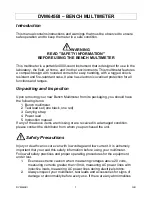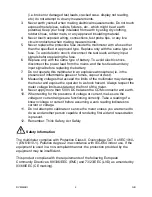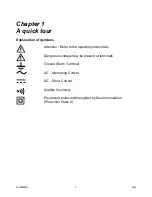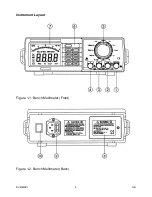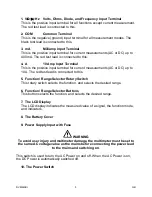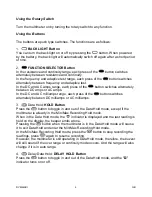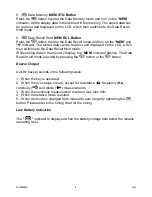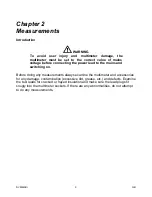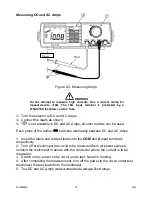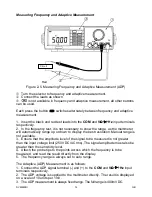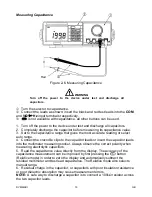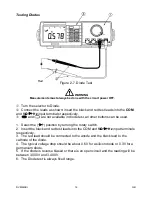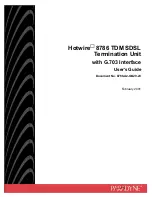
DVM645BI GB
2
(i.e. broken or damaged test leads, cracked case, display not reading,
etc.) do not attempt to do any measurements.
3.
Never earth yourself when making electrical measurements. Do not touch
exposed metal pipes, outlets, fixtures, etc., which might be at earth
potential. Keep your body insulated from earth by using dry clothing,
rubber shoes, rubber mats, or any approved insulating material.
4.
Never touch exposed wiring, connections, test probe tips, or any live
circuit conductors when making measurements.
5.
Never replace the protective fuse inside the multimeter with a fuse other
than the specified or approved type. Replace only with the same type of
fuse. To avoid electric shock, disconnect the test leads and any input
signals before replacing the fuse.
6.
Replace only with the same type of battery. To avoid electric shock,
disconnect the power lead from the mains, and the test leads and any
input signal before replacing the battery.
7.
Do not operate this multimeter in an explosive atmosphere (ie. in the
presence of inflammable gases or fumes, vapour or dust).
8.
Measuring voltages that exceed the limits of the multimeter may damage
the meter and expose the operator to a shock hazard. Always respect the
meter voltage limits as stated on the front of the meter.
9.
Never apply more than 500V DC between the COM connector and earth.
10. When testing for the presence of voltage or current, make sure the
voltage or current ranges are functioning correctly. Take a reading of a
known voltage or current before assuming a zero reading indicates no
current or voltage.
11. Do not attempt to calibrate or service the meter unless you are trained to
do so and another person capable of rendering first aid and resuscitation
is present.
12. Remember: Think Safety, Act Safely
Safety Information
The multimeter complies with Protection Class II, Overvoltage CAT II of IEC1010-
1 (EN61010-1). Pollution degree 2 in accordance with IEC-664 indoor use. If the
equipment is used in a non-compliant manner, the protection provided by the
equipment may be insufficient.
This product complies with the requirements of the following European
Community Directives: 89/336/EEC (EMC) and 73/23/EEC (LVD) as amended by
93/68/EEC (CE marking).


